
between 2012-2016, 21 breweries in Virginia grew to 98 - with the greatest number in Loudoun County
Source: Bureau of Census, Breweries in Virginia

between 2012-2016, 21 breweries in Virginia grew to 98 - with the greatest number in Loudoun County
Source: Bureau of Census, Breweries in Virginia
The oldest evidence of making beer dates back 13,000 years. At the time, residents at Raqefet Cave in modern-day Israel were transitioning from a hunting-gathering lifestyle, shifting towards becoming settled farmers. Starch and phytoliths (plant residues) found in an ancient mortar suggests it was used to pound grains, then cook them and brew beer:1
Virginia has a long history with beer. The first English colonists brought beer to Jamestown in 1607. In 1647 a traveler reported in a Perfect Description of Virginia:2
It makes sense to locate a brewery near a major city; transportation costs from the manufacturing site to the customer can be reduced, but the costs of labor and taxes will be low outside the city limits. That is why Budweiser is brewed in James City County.
The other major manufacturer with a brewery in Virginia is Coors. In 1987 Coors built a plant near Elkton where they blend, package and distribute 7 million barrels of Coors beer to Eastern markets. Rockingham County has excellent water supply and water quality, so Coors beer in Virginia includes Shenandoah Valley - as well as Rocky Mountain - water.
In the movie Smokey and the Bandit, the thin plot line was based on a race to deliver Coors from the western states. That is now an outdated scenario. Coors can sell its beer nationwide, in part because starting in 1987 it sent tank cars with "beer concentrate" (a specially-brewed, high-alcohol version of its standard beer) from Golden, Colorado to Rockingham County. Adding water and packaging in Virginia reduced the shipping costs substantially to the Northeast and Middle Atlantic markets.
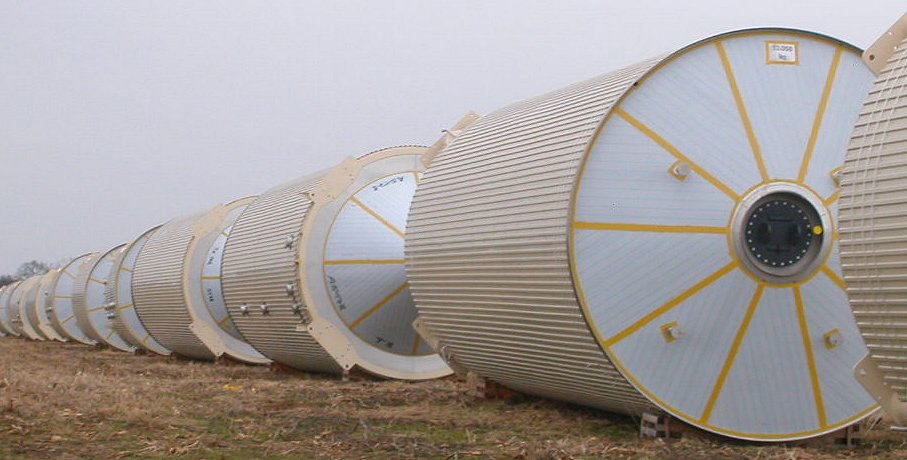
Coors fermentation tanks at Farley Vale Farm
Coors upgraded that packaging plant to a full-scale brewery in 2006. This involved importing 40 fermentation tanks from Ziemann, Germany, and shipping the tanks to Elkton. The tanks were shipped to Hampton Roads, then barged up the Chesapeake Bay and the Rappahannock River to the Farley Vale Farm just downstream of Fredericksburg.
Getting the 70-foot long, 21-foot in diameter tanks from a farm in King George County to Rockingham County required truck transport over the highway. Traffic lanes on Routes 3, 29, 33, 649, 340 are about 12-feet wide, so special convoys were arranged to interrupt regular traffic and two lanes, in order to ship the fermentation tanks by truck the last 100 or so miles across the Blue Ridge to the Shenandoah Valley.
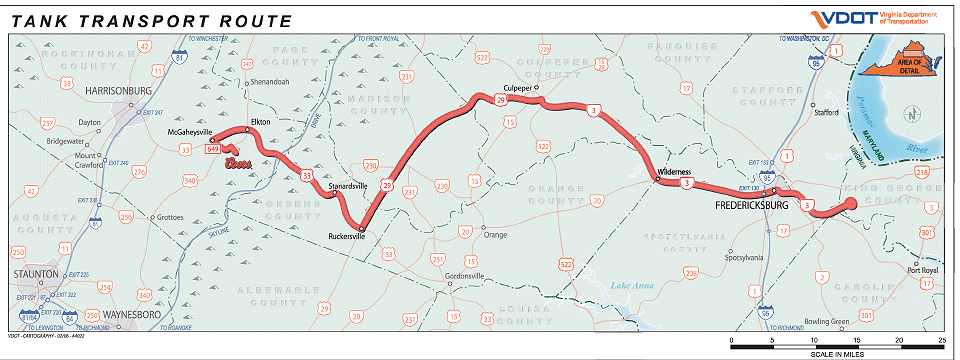
transport route for Coors fermentation tanks in 2006
Source: Virginia Department of Transportation
It might have been easier to install the tanks in 2006 if Coors had decided in 1987 to build its packaging plant in King George County. However, the company found the right mix of cheap land, abundant and clean groundwater, available labor force, and access to markets in the Eastern United States via rail (Norfolk Southern) and truck (especially via I-81) in a different location - Rockingham County.
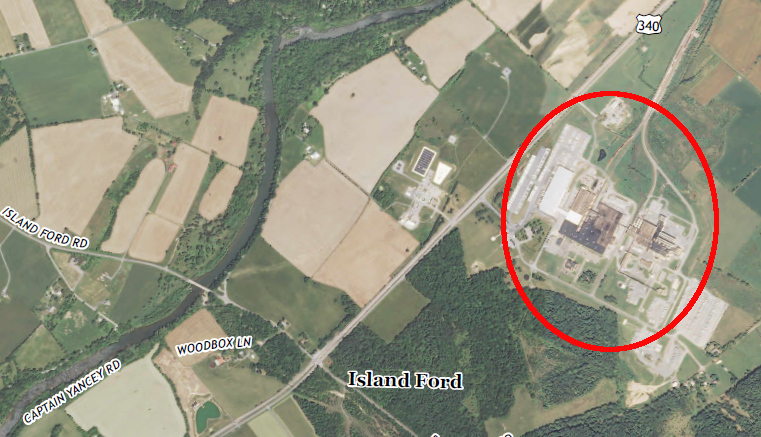
Shenandoah Brewery for Coors has access to high-quality groundwater and also the Norfolk Southern railroad
Source: US Geological Survey, McGaheysville 7.5x7.5 topographic quadrangle (2013, Revision 1)

in 2023, five different beers were produced at Shenandoah Brewery
Source: Molson Coors, Our Story
The major commercial breweries manufacture beer in a few massive facilities and ship their product to stores and restaurants. Most Virginia microbreweries produce much small batches of beer, and have to attract customers to their facilities or rely upon just local retail sales. Combining a microbrewery with a restaurant can showcase brewing equipment to attract customers, and sell the product directly.
The microbreweries in Virginia are located with a different pattern than wineries. Wineries are typically in rural areas, but most Virginia microbreweries are located near universities or in large population centers (especially Alexandria/Arlington and Richmond).
The Old Dominion Brewing Company started operations in an office park in Ashburn in 1989, and struggled to attract enough customers to the brewpub onsite. The operation also experienced a problem after a major storm caused Loudoun Water to add additional chlorine to ensure delivery of safe drinking water - that affected the taste of the beer for several batches of beer and root beer. The brewpub closed in 2008, and the entire operation moved to Delaware the next year, but Northern Virginia has no shortage of brewpubs today.3
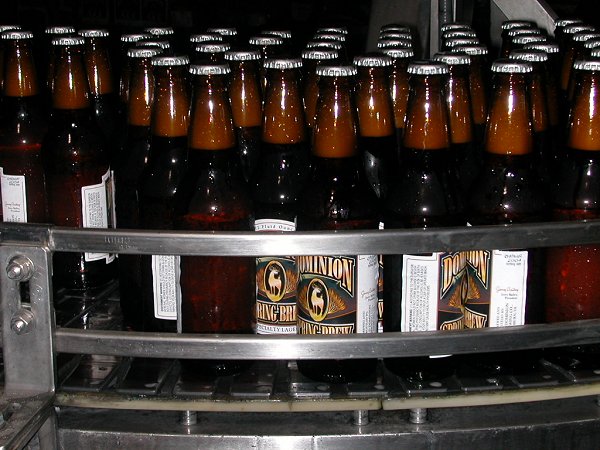
bottling Old Dominion beer at the brewery in Ashburn (Loudoun County)
The General Assembly encouraged development of brewpubs in 2012, when it passed a law allowing beer to be sold for consumption on site without requiring a restaurant license. Within two years, the number of craft breweries in Virginia increased 75%, mimicking the growth of wineries once sales were permitted at tasting rooms without full food service operations. A 2014 law enhanced the ability of farm breweries to sell on-site, so long as the beer uses agricultural products from that farm (such as hops).4
In 2014, Green Flash Brewing Company announced plans to build a $10-20 million brewery in Virginia Beach and distribute all of its beer east of the Mississippi River from that location. Green Flash chose that location over Wilmington, NC only after the bill passed.
That same year, Stone Brewing Company chose Richmond as the site of its new $74 million brewery and beer garden. Financial support from city and state government were actors in the decision by Stone; but Gov. McAuliffe also pushed hard - even installing a Kegorator with Stone in the Governor's mansion.5
Tourism officials see great potential in creating craft beer trails such as the Brew Ridge Trail in Nelson/Albemarle counties and the city of Charlottesville. Making breweries into destinations, comparable to wineries, creates jobs in rural areas; each craft brewery is estimated to create 10-50 jobs. The top tourism official for Virginia noted:6
Not all beer business plans are successful. Green Flash opened in November 2016, and abandoned Virginia Beach in March, 2018. It had borrowed money to expand too much, and could not repay its debts. New Realm Brewing bought the facility after Green Flash closed, "at a very good price." It hired Green Flash's head brewer and re-started the brewhouse, then planned to add a restaurant with 450 seats.7
On January 24, 1935, Gottfried Krueger Brewing Company in Richmond served the first beer in steel cans.8
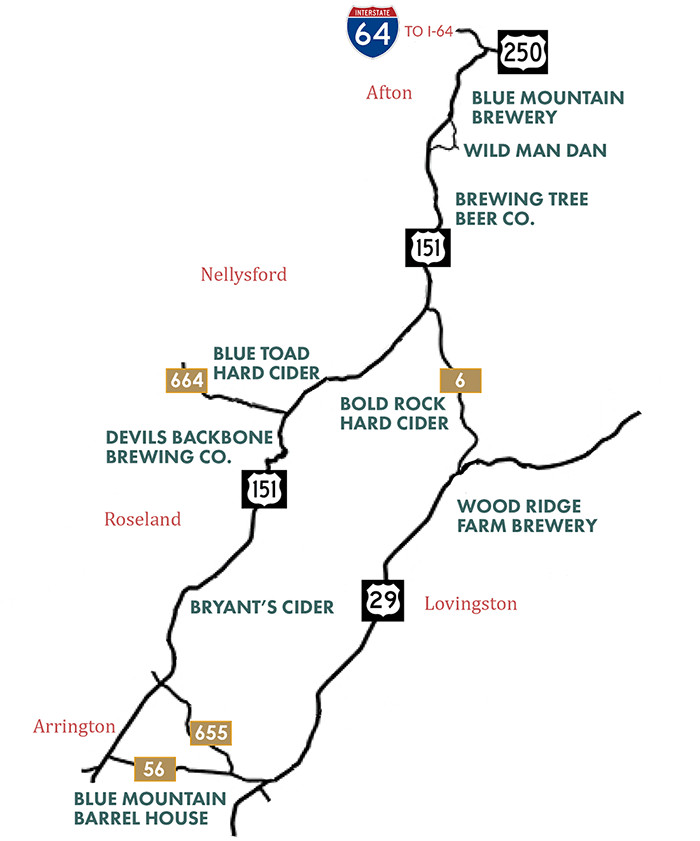
multiple tourism-focused craft beer trails have been established in Virginia
Source: Brew Ridge Trail, The Brew Ridge Trail Map
There is a Virginia Beer Museum, located in Front Royal. A local lawyer had accompanied his wife to a ballet show that he found boring, and while daydreaming he decided to create a beer museum in the building next to his office.
The museum wanted to sell beer, but Virginia's Alcoholic Beverage Control (ABC) regulations required selling $2,000/day in food in order to sell beer. Until a new law authorized the museum to sell beer by the glass, customers were allowed to purchase a glass for $7 and the beer was provided free.9